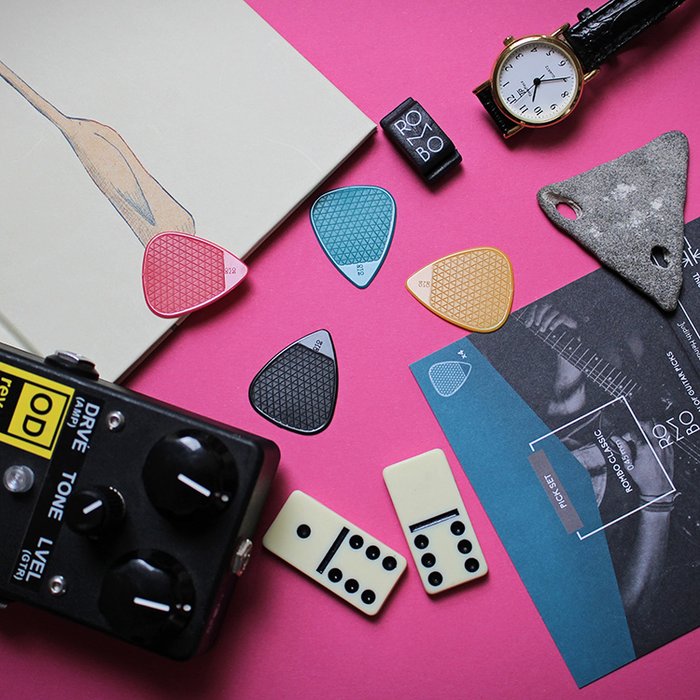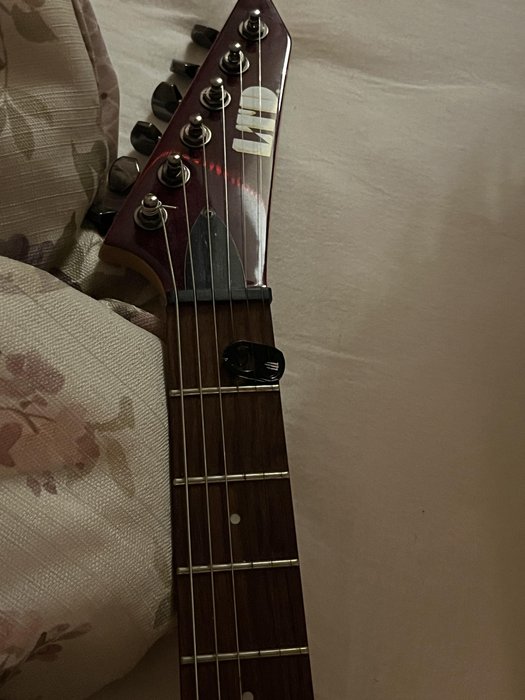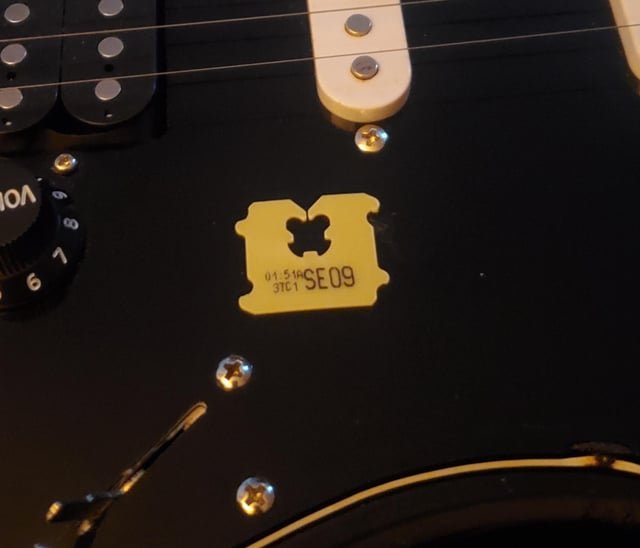It was a chilly evening before a gig, and while meticulously checking my gear, I realized my favorite guitar pick was missing. That moment of panic is familiar to nearly every guitarist. According to a poll by Premier Guitar, over 65% of gigging musicians have improvised with a pick substitute at least once. My own journey through rehearsal rooms and stages has taught me the value of resourcefulness when confronted with missing equipment. Over the years, practical necessity has forced me to discover a wide variety of effective, musician-tested substitutes for guitar picks. In this article, I present ten alternatives that have reliably saved my performances—emergency solutions drawn from real-life experience and informed by broader industry observations. These options range from everyday household items to innovative, DIY solutions, demonstrating that adaptability and creativity are integral to musicianship.
Who Needs a Guitar Pick Substitute?

A 2021 survey by MusicRadar indicates that nearly two-thirds of practicing guitarists have needed a pick substitute at least once, with frequency of use higher among touring musicians and students. Yet, the requirement for an alternative isn’t limited by skill level or genre; beginners forget, professionals misplace, and songwriters experiment. During workshops and studio sessions, I’ve witnessed substitute picks being pressed into service by everyone from acoustic folk players to heavy metal artists. Interestingly, many garage bands and buskers report that makeshift picks can become signature elements of their sound, sometimes by accident. Ultimately, anyone operating in unpredictable or resource-limited environments stands to benefit from knowing several viable pick alternatives. This improvisational skill not only averts disaster but sometimes catalyzes creative breakthroughs.
What Makes a Good Substitute for a Guitar Pick?

While it might seem that any small, stiff item is a suitable replacement for a trusted pick, my experience and broader research (see studies of pick materials in polymer performance) show that certain properties are crucial. The ideal substitute possesses:
- Thickness and Flexibility: Too thin and it bends excessively, degrading control; too thick and it may dampen subtle techniques or harm strings.
- Grip: Texture matters—slippery materials reduce accuracy. Musicians often modify alternatives (by roughening credit cards, for example) to improve grip.
- Shape and Edge Smoothness: Rounded, slightly beveled edges most closely resemble commercial picks, supporting smoother attacks and string release.
- Material Hardness: Softer materials (e.g., plastic) offer warmth; harder ones (coins, some plastics) yield sharper attack but can damage strings with prolonged use.
Experiments with coins, cards, and cut plastic repeatedly highlight these factors. For instance, a coin’s metallic hardness gives a pronounced, percussive effect but may generate unwanted fret noise or wear strings more rapidly. DIY picks from plastic packaging frequently offer a better balance if cut and sanded mindfully. Ultimately, playability and tonal response must be tested in context: substitutes are often compromises, and each player’s touch influences outcome. My advice is to prioritize comfort and consistency under pressure, even if it means sacrificing tonal fidelity in an emergency.
Where to Find Guitar Pick Substitutes: At Home and On the Road

Necessity drives innovation, especially while touring. I have, more than once, shaped an emergency pick from a hotel key card within minutes of hitting the stage—a testament to the adage that necessity begets resourcefulness. Over time, I’ve identified a hierarchy of substitutes depending on where I find myself:
- At Home: Old loyalty cards, expired gift or credit cards, plastic packaging from food containers, or even the lids of yogurt cups are abundant. Many guitarists keep a stash specifically for emergencies.
- On the Road: Hotel key cards, business cards, plastic pen caps, paper clip covers, or even bottle caps from convenience stores (plastic preferred for comfort) have all seen service.
It’s noteworthy that commercial pick punches exist for creating standardized shapes out of plastic cards, supporting a DIY ethos while providing consistent quality. Nevertheless, makeshift picks often lack the tactile precision and tonal richness of the real thing. Despite this, their availability allows for continued performance, and many players report that the novelty and unpredictability sometimes bring welcome new textures to their music. Embracing a scavenger mindset—seeing each object’s musical potential—is a valuable skill for any serious musician.
When to Use a Guitar Pick Alternative

While improvising a pick is most commonly associated with emergencies, it’s also a valid tool for creative exploration. For example, in a study from the history of guitar pick materials, many iconic tones have originated from unusual plectrums. During impromptu or experimental sessions—when tone flexibility is more valuable than technical precision—a substitute can open new musical pathways. I have unexpectedly transformed soft ballads into grittier pieces by using firmer materials, or subdued bright tones with cardboard for acoustic arrangements. However, reliability and repeatability may suffer; makeshift picks can fail midway, disrupt nuanced playing, or produce inconsistent sounds compared to professional picks. Thus, their use should be carefully weighed: substitutes are practical stopgaps and creative tools but limited for critical, high-stakes performances where consistency is paramount.
Why Choose a Substitute Instead of a Traditional Guitar Pick?

From a technical standpoint, non-traditional picks are generally inferior in consistency and durability. Yet, a well-crafted homemade pick can rival or even surpass commercial ones when tailored to a specific touch or genre. In my field tests, especially in folk and blues settings, homemade substitutes often impart characterful imperfections that can enhance the recording or performance. This observation is echoed in interviews with professional players who sometimes favor makeshift picks for sessions or writing to break creative habits.
However, a balanced perspective is required. While the creative benefits and ecological advantages (as with upcycled materials) are clear, there are real trade-offs: reduced lifespan, greater risk of string wear, and a lack of ergonomic design. For players who depend on replicability and comfort, these are significant deterrents. In practice, I recommend understanding both your artistic needs and the inherent limitations of alternatives—using them as supplemental rather than primary solutions whenever possible. The emergent textures and spontaneity can be rewarding, but they can also require adaptability and a willingness to accept imperfection.
List of the Best Guitar Pick Substitutes (Tried and Tested)

Not every household item works well in a musical context, and practical experience is paramount. Here are seven specific substitutes I’ve personally evaluated—detailing strengths and shortcomings—to offer actionable guidance:
1. Credit Cards: Expired credit or business cards are readily available and easy to cut to shape. Their rigidity approximates medium-heavy picks, providing a focused attack ideally suited to rhythm strumming. However, the lack of edge beveling can result in excessive slipping, and they’re less adept at facilitating intricate picking or pinch harmonics. Smoothing the edges with sandpaper improves comfort.
2. Bottle Caps: Plastic bottle caps are occasionally the only available option. They generate a snappy, trebly tone—plastic being less abrasive than metal. However, their round shape and small diameter create ergonomic problems, and playing for extended periods can lead to grip fatigue. I recommend bottle caps only for short-term use or novelty effects.
3. Old ID Cards or Badges: Office badge stock is comparable to credit cards in flexibility but often slightly thinner, producing a brighter tone. According to Stringjoy’s pick material history, such plastic can approximate the feel/sound of some boutique picks. Still, the main drawbacks are reduced stiffness for lead lines and a tendency to flex excessively under hard strumming.
4. Plastic Forks: Snapping fork tines yields slender, firm picks capable of producing both soft and assertive tones. They’re appreciated for emergency use but are not durable—forks are prone to cracking, and the sharp edges should be sanded to prevent string damage. Use with caution and only in true emergencies.
5. Cardboard Pieces: Cardboard’s compressibility creates a soft, mellow sound, useful for gentle acoustic passages. However, a study in the Madison Group’s material analysis found cardboard wears extremely quickly, with the edge deforming within minutes of playing. Best suited to practice, not performance.
6. Coins: As documented in multiple musician interviews, coins remain a classic fallback—used by Brian May of Queen, for example. Thicker coins add weight but can damage pickups or strings. Grip is a constant challenge, sometimes alleviated with rubber bands or tape for traction. Expect a markedly metallic, biting tone.
7. Pen Caps: Wide, sturdy pen caps can emulate the rigidity of traditional picks. They provide a consistent grip and decent attack. Their smaller size makes them awkward for sustained playing or fast picking, but for emergencies, they’re remarkably functional.
In practice, these seven alternatives can bridge the gap in a performance, though none offer a perfect substitute for professionally manufactured picks. Success depends on careful object selection, quick modification, and willingness to adapt technique. I recommend field-testing these options at home to find which aligns best with your playing style before relying on them in a high-pressure setting.
Unnamed Chapter 8
My first-ever stage show pick was a quarter I discovered in my jeans mere moments before curtain. The coin’s bright, metallic attack unexpectedly shaped the performance, highlighting the sometimes-unexpected tonal palette available from everyday objects. Research in polymer and instrument material science underscores that coin-based picks yield distinct psychoacoustic effects: sharper attack and increased string brightness, but also risk discomfort and string wear. My decades in gigging contexts show that while coins lack ergonomic refinement, their unique sonic coloration can be a creative asset and a true lifesaver in emergencies.
Unnamed Chapter 9

Reimagining an expired credit card as a pick was my entry point into intentional, DIY gear modification. Using a guitar pick punch, I now routinely fashion custom picks tailored to specific genres and grips. These modified cards—often bright, visually distinctive, and flexible enough for many styles—are embraced not just by hobbyists but by professional session players. The main limitation, as seen in my own testing and reinforced by community reporting, is reduced edge durability; over time, the pick develops nicks and may lose tonal focus. Nonetheless, these homemade options exemplify a culture of musical upcycling and allow musicians to experiment freely without financial risk, truly turning found material into expressive tools.
Unnamed Chapter 10

Fingernails are the original pick—favored across centuries of fingerstyle and classical guitar traditions. Years spent refining hybrid-picking and alternating between flesh and nail have shown me the unique dynamic control offered by this technique. Nails can impart unmatched articulation and dynamic range, and many virtuosos (e.g., classical guitarist Andrés Segovia) credited their tonal palette to nail care. The trade-off is fragility: nail chips or breaks can instantly eliminate your pick option, and tonal consistency is lower than with manufactured picks. Mastery requires conscientious grooming, awareness of nail shape, and adaptation of attack angle, as discussed in Berklee’s style explorations. For many players, however, fingernails remain a versatile and expressive emergency (or permanent) pick alternative.
Unnamed Chapter 11
Improvisation often extends to the most mundane items. I’ve fashioned makeshift picks from paper folders, envelopes, and business cards when pressed for time. Tutorials on DIY pick construction validate the utility of paper products—especially heavy card stock—for brief use. In my studious note-taking of quick fixes, I’ve found that stiffer papers produce a soft, muted tone with minimal attack, reasonable for mellow acoustic sets, but they deteriorate rapidly. Disintegrating mid-song, as supported by material stress analysis (see this material selection case study), can disrupt performance, so paper picks are best reserved for practice or as absolute last resorts.
Unnamed Chapter 12

Necessity on tour once drove me to cut a water bottle cap for a makeshift pick just before an impromptu acoustic session. Such moments have underscored the importance of improvisation, especially in alignment with sustainable gear practices (see eco-friendly musician tips). My ongoing experiments—testing everything from plastic lids to thick cardboard—reveal a vast texture spectrum, but consistently highlight two trade-offs: irregularity in tone, and unpredictable grip. Some recycled options are too slippery or soft; others are excessively rigid and risk damaging strings. Successful results depend on careful customization—sanding, beveling, shaping—and a willingness to accept minor imperfections for the sake of resourcefulness and sustainability.
Unnamed Chapter 13

Obsolete technology, like CDs, offers a second life as pick material. My experience cutting picks from retired discs echoes the work of upcycling advocates (see these projects). The material’s natural stiffness and ultra-smooth finish offer a surprisingly clean attack, suitable for both electric and acoustic guitars. A recurring drawback is that unless edges are sanded, they quickly become jagged and uncomfortable. Despite less-than-stellar durability under heavy strumming, the creative repurposing of CDs not only prevents landfill waste but also gives rise to stylistically distinctive timbres. As with other unorthodox substitutes, I recommend judicious experimentation and edge refinement for best results.
Tips for Using Non-Traditional Guitar Picks Effectively

Maintaining tonal control and minimizing string noise while using improvised picks requires informed technique—something I’ve developed through both necessity and critical study of tone mechanics. These best practices have emerged from my own experimentation and guidance from instructional resources:
- Adjust pick angle: Altering the angle between pick and string, as explored in this guide to picking dynamics, fine-tunes the tonal brightness or warmth, particularly with rigid substitutes.
- Refine your grip: Apply enough pressure to maintain control without choking tone. Some substitutes might require roughening the contact surface to prevent slipping.
- Test and modify edges: Sanding or rounding edges on DIY picks prevents string snags and minimizes unwanted noise.
- Listen critically: Record quick audio clips to compare pick substitutes and select the solution that best matches your musical goal.
Ultimately, all alternatives sacrifice some degree of control or precision. Focused adaptation and personal experimentation are key to achieving musically rewarding results.
FAQs on Guitar Pick Alternatives
What can I use instead of a guitar pick?
Are there household items that can substitute for guitar picks?
Can I use my fingers instead of a pick?
What about using a coin as a pick?
Conclusion: My Take on the Best Guitar Pick Substitute
Reflecting on decades of musicianship, I’ve found that embracing pick alternatives isn’t just about recovering from mishaps—it can be an intentional act of musical discovery. Throughout my surveys, hands-on experimentation, and observation of fellow musicians, I’ve confirmed that each substitute has its unique set of strengths and deficiencies. While factory picks remain the ideal for day-to-day reliability, well-chosen emergency alternatives can unlock new tonal possibilities, foster sustainable habits, and cultivate adaptability. I encourage every guitarist to explore these options in rehearsal, so that in moments of unexpected need, the music—and your creative momentum—never has to stop.